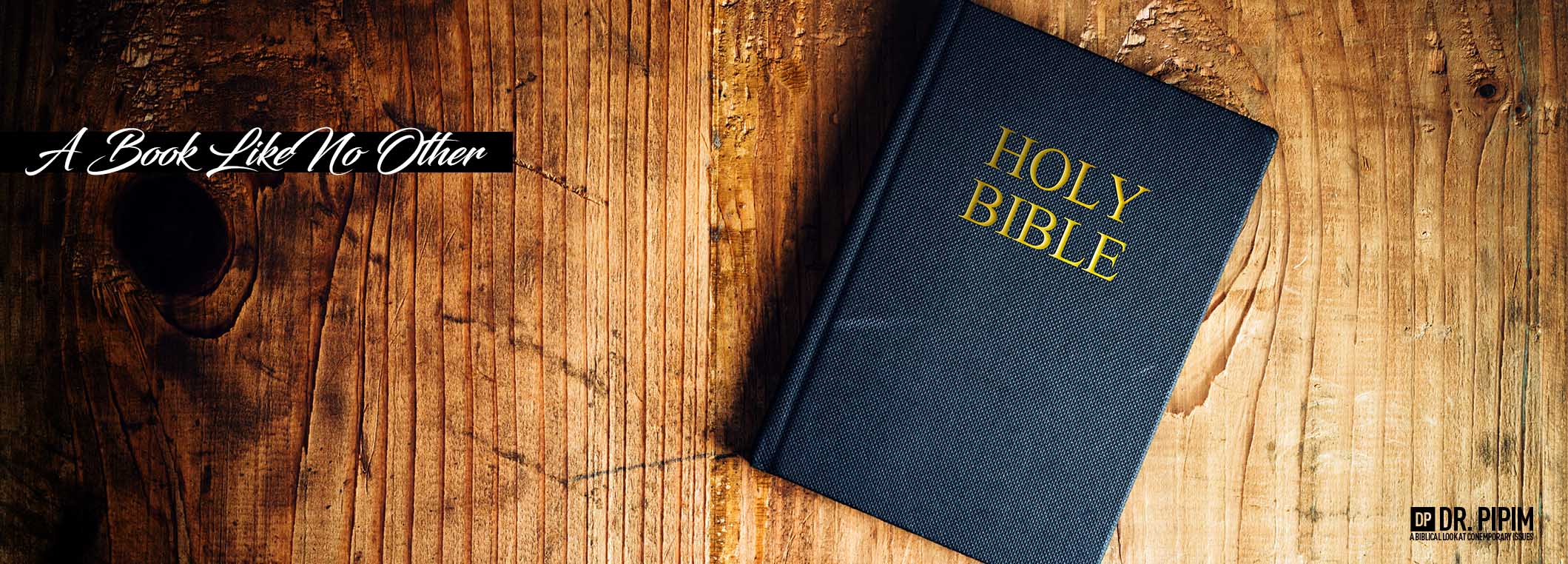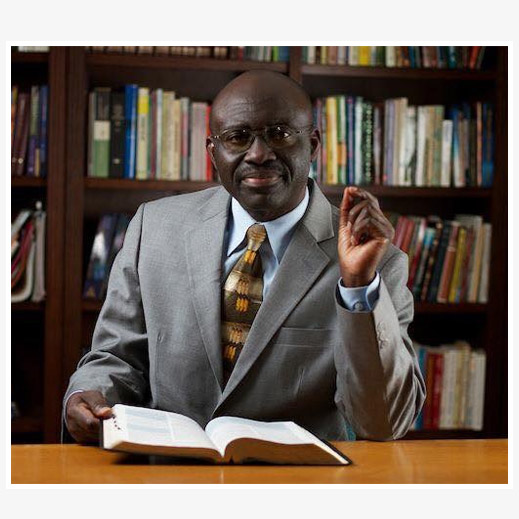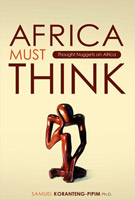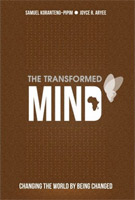Three Conflicting Views on Homosexuality
(Which Position Must the Church Adopt?)
[This article is excerpted from the author’s book Must We Be Silent?]
By
Samuel Koranteng-Pipim, Ph.D.
Director, Public Campus Ministries, Michigan Conference
The Christian church is, today, being called upon to decide what homosexuals should do when they become Christians. Should homosexuals change their orientation, control their orientation, or celebrate their orientation?
The answer to this question has given birth to three contending positions in Christian churches: (a) the non-acceptance view, which maintains that homosexuality is not compatible with biblical Christianity (b) the qualified-acceptance view, which argues that homosexuality can be compatible with Christianity, and (c) the full-acceptance view, which asserts that homosexuality is fully compatible with the Christian faith.
Seventh-day Adventists historically have adopted the non-acceptance view. But as pro-homosexual groups (like Kinship) continue their campaign for the full-acceptance view some segments within contemporary Adventism are moving towards the qualified-acceptance view. Since all three views are represented in contemporary Seventh-day Adventism, and since each is based on a set of theological and ethical assumptions, I will briefly summarize the respective views. In the next two chapters, I will raise some critical questions for those seeking to move the church towards qualified-acceptance and full-acceptance of homosexuality.
Historically embraced by the Christian church, this position maintains that homosexuality is incompatible with biblical Christianity.[1] Despite the efforts by some thought leaders within our ranks, the non-acceptance view remains the official position of the Seventh-day Adventist church. The following are some of its basic tenets:
(a) Nature of Homosexuality: This view holds that homosexuality is a post-fall distortion of human sexuality. Whether constitutional (i.e., believed to be born gay) or situational (i.e., forced by single sex environments, e.g., prisons, military camps, monasteries), homosexuality is no different from other depraved sexual deviations (such as bisexuality, bestiality, adultery, fornication etc.). The popular statement, "If God had intended homosexuality to be a legitimate expression of human sexuality, He would have created Adam and Steve, not Adam and Eve," aptly summarizes the non-acceptance position.
(b) Morality of Homosexuality: According to the non-acceptance position, homosexuality is both sinful (like pride, adultery, and murder) and evil (like sickness and death). Like all other morally corrupt tendencies, homosexual orientation or disposition does not excuse the sin of homosexuality. All people are tempted to act upon their besetting sexual desires, cravings or tendencies (homosexual and heterosexual). The temptation is not sin, but yielding to it is morally wrong.
(c) Way Out of Homosexuality: Believing that there is no sin that is outside the scope of the sanctifying work of the Holy Spirit, the non-acceptance position maintains that the Creator of human sexuality can fix every sexual problem. Homosexuality and homosexual lifestyle can, therefore, be overcome by God's transforming power (in the conversion/new birth experience) and by God's enabling or sustaining grace (in the gradual work of sanctification). God is able to deliver a homosexual from his/her sin and keep such a person from falling. Therefore, the non-acceptance view denies the claim that homosexuality is incurable.
(d) Response to Homosexuality: The church should accord all homosexuals their full rights as human beings created in the image of God, show compassion, kindness, and Christian love to all those struggling with sexual sins, and point them to Jesus Christ as the Answer to all their needs. Homosexuals should be urged to repent and accept God's forgiveness.
Homosexuals who acknowledge the sinfulness of homosexuality, who accept Christ's offer of forgiveness, who cut themselves loose from homosexual relationships, and who, by faith, commit themselves to a life of sexual purity should be accepted into church fellowship. But those who do not acknowledge homosexuality as sin and/or those who are engaged in homosexual relationships or practices should not be accepted into church membership.[2]
The non-acceptance view, therefore, rejects the view that “once a homosexual, always a homosexual.”
Currently gaining currency in certain quarters of the Adventist church, this accommodating view argues that homosexuality can be compatible with Christianity. [3] The following are some of its essential teachings:
(a) Nature of Homosexuality: Unlike the non-acceptance position which holds that homosexuality is post-fall distortion, the qualified-acceptance maintains that homosexuality is a post-fall aberration of human sexuality. Homosexual condition/orientation (constitutional homosexuality or inversion), according to this view, is a non ideal condition of human sexuality (just as poor eye-sight, asthma or allergies). "God didn't create homosexuality, as He didn't create loneliness or disabilities.” [4] Homosexuality is not God's ideal plan for people, and therefore must be removed wherever possible.
The qualified-acceptance position argues that the homosexual condition is not sin but a condition of sinfulness. What advocates mean is that homosexual condition or orientation is one evidence of the brokenness and fallenness of our present world. The condition may be classified with disease (such as alcoholism, or allergies), with handicap (such as congenital blindness), and eccentricity (such as left-handedness). It may even be evil (like sickness or death), but not necessarily sinful (like pride, blasphemy, or murder).
Because homosexuals presumably did not choose to be born gay, "we shouldn't hold a person responsible for her or his sexual orientation any more than we hold a person responsible for skin color (nature)." [5] Being a homosexual is not sin, [6] but lustful and inappropriate homosexual activity is sin and therefore, must be avoided. [7]
(c) Way Out of Homosexuality: In very rare situations, God may deliver some homosexuals from their condition/orientation. Generally, however, since genuine homosexuals did not choose their orientation, and since in most cases there is no possibility of change in orientation, homosexuals must aim at controlling (i.e. putting in subjection) their homosexual drives. One Adventist scholar writes:
We must teach them to live with their condition. In a sense it is like being born left-handed. . . . However, it does not give license to practice homosexual acts, which violate Christian moral standards. In this situation we must consider the homosexual on the same basis as the heterosexual. . . . The homosexual may not be able to do anything about his attraction for his own sex, but by God's grace he can control his impulses. He may not have had any real choice regarding his condition, but he has choice about his actions. [8]
Cure or deliverance may not always be possible for those with homosexual orientations. But through prayer, counseling, human therapy, and other methods of behavior modification (skills of self-discipline or self-control), homosexuals can cope with their sexual predicament.
(d) Response to Homosexuality: While accepting their condition as a "thorn in the flesh," and while controlling their desires, homosexuals should accept God's unconditional love and acceptance. On the other hand, the church should treat people with homosexual orientation as one would treat heterosexuals--i. e., as real human beings, of equal value in God's sight and having the same rights as all others. It should show understanding, compassion, and love to them "neither condemning them for an orientation over which they have no control, nor encouraging them to accept something less than God's best for their lives," [9] as homosexuals are led to accept Jesus as their Savior.
Homosexuals who renounce homosexual practices and make a commitment to remain celibates must be accepted as members in good and regular standing in Church. They can hold church offices and can be ordained as ministers. "If an alcoholic who never drinks alcohol can hold any church office, a homosexual who never practices homosexuality can hold any church office." [10]
The qualified acceptance view, therefore, assumes that "once a homosexual (almost) always a homosexual."
Historically rejected by the church, this revisionist view of morality asserts that homosexuality is fully compatible with Christianity. [11] In the Adventist church, this view is actively promoted by Kinship, an organization that claims to be “a support group for gay and lesbian Seventh-day Adventists.” The following are some of its primary precepts:
(a) Nature of Homosexuality: The full-acceptance position sees homosexuality as part of the pre-fall natural order. In its view, genuine (constitutional) homosexuality is not a distortion of human sexuality (as held by the non-acceptance view), nor an aberration (as argued by the qualified-acceptance position.) Instead, homosexuality is an immutable sexual orientation given or created by God as a gift to some people--just as is heterosexuality. It is an eccentricity (a characteristic of a minority) or a mark of one's individual identity (just like possessing a particular color of the skin, eye, or hair).
(b) Morality of Homosexuality: Homosexuality is morally neutral; it is neither evil nor sinful. An article in the Newsletter of SDA Kinship states this position well:
Homosexuality and heterosexuality are two aspects of sexuality, neither being the counterfeit of the other, both being right or wrong depending upon the context of their expression. . . . Both the homosexual and the heterosexual are capable of lusting or loving, worshiping the creature or the Creator, and of seeking salvation by works or accepting it as a gift of God. [12]
Homosexuality may be eccentric, but it definitely is not sinful (like murder, or pride) or evil (like congenital blindness or the sickness of alcoholism). [13] The abuse of homosexuality (e. g., promiscuity, rape, or prostitution) is wrong, but not its legitimate expression (as in loving, consensual, monogamous, homosexual relationships).
(c) Way Out of Homosexuality: According to the full-acceptance view, to insist that homosexuals should change their orientation is equivalent to asking an Ethiopian to change his skin, or asking a person five feet tall to become six feet. Homosexuals do not have to be transformed into heterosexuals, nor should they just control themselves until they become heterosexualized. Because of the long years during which they have been victimized as “sexual minorities," homosexuals must claim the assurance of God's acceptance and leading in their homosexual lifestyle.
(d) Response to Homosexuality: Homosexuals should not be condemned, despised, or singled out as the embodiment of sexual perversion. They, like all others, deserve love, dignity, and respect. Effort must be expended to present the living Christ to the homosexual who is not yet a Christian (i. e. the person who was born a gay but has not yet been born again). But whether converted or unconverted, all homosexuals should celebrate God's "gift" (homosexual orientation), and practice homosexuality within a permanent relationship of love and fidelity or within the biblical guidelines for sexual morality.
Homosexuals who accept Jesus Christ as their Lord and Savior must be considered as full and regular members of the church, and if they choose, they must be encouraged to date other homosexuals--as long as the relationship is kept pure. In other words, homosexuals should be affirmed in their same sex relationships, be allowed to "marry" or to form "closed-couple homosexual unions,"[14] and whenever necessary, be permitted to adopt children. The rules of marriage should apply in homosexual marriages just as in heterosexual marriage. Converted homosexuals who have a calling or the requisite spiritual gifts should be ordained as pastors.
The full-acceptance view, therefore, maintains that "once a homosexual, always a homosexual."
Summary. All three views--non-acceptance, qualified acceptance, and full-acceptance positions---are competing for converts within the Seventh-day Adventist church. The hot potato issue is whether to regard homosexuality as: (a) a morally-sinful practice to be renounced, (b) a morally-neutral condition to be controlled, or (c) a morally acceptable gift to be celebrated.
Each of the three views raises crucial theological, ethical, and hermeneutical issues. Of the three views, only the non-acceptance and full-acceptance positions are consistent. Of these two, only the non-acceptance view is biblical. The qualified acceptance view is neither consistent nor biblical. In other words, it is my contention that whereas the non-acceptance position is consistent and biblical, and while the full-acceptance view is consistent but not biblical, the qualified-acceptance position is neither consistent nor biblical.
Yet, it appears that the qualified-acceptance view is that which is being widely promoted in church publications. Before the Adventist church renounces its traditional non-acceptance position in favor of the qualified acceptance position, or even the full-acceptance view, the church should demand biblically consistent answers from advocates of these versions of pro-gay theology.
Chapters 5 and 6 of the author’s Must We Be Silent address these issues, evaluating some of the common arguments often put forth in defense of these views of homosexuality. The chapters are available on this DrPipim.org website as “Some Popular Arguments for Homosexuality” and “Some ‘Biblical’ Arguments for Homosexuality.”
[1] Representatives include Westmont College New Testament scholar Thomas E. Schmidt, Straight and Narrow? Compassion and Clarity in the Homosexual Debate (Downers Grove, IL: InterVarsity, 1995), Louisville Seminary New Testament professor Marion Soards, Scripture and Homosexuality: Biblical Authority and the Church (Westminster, PA: John Knox, 1995), Gordon-Conwell Seminary church historian Richard Lovelace, The Church and Homosexuality (Old Tappan, NJ: Flemming H. Revell, 1978), and Don Williams (Biblical scholar at Claremont Men's College), The Bond That Breaks: Will Homosexuality Split the Church (Los Angeles, CA: BIM Publications, 1978). In their theological discussions, Schmidt, Soards, Lovelace and Williams pay greater attention to church history and Biblical theology than to contemporary scientific findings on homosexuality.
[2] Ronald M. Springett concludes his study on homosexuality: "The church must accept the individual of homosexual orientation who needs help and support and [who] struggles against same-sex tendencies. But those who insist on and promote the active homosexual lifestyle as normal, natural, or even superior to heterosexual relations by that very act disregard and undermine the sole authority upon which the church's very existence and mission is based, namely, the Scriptures" (Springett, Homosexuality in History and the Scriptures, 164).
[3] Helmut Thielicke, The Ethics of Sex, trans. John Doberstein (New York: Harper & Row, 1964), and Lewis Smedes, Sex for Christians (Grand Rapids, MI: Eerdmans, 1976) adopt this view. While the latter is a more popular version than the former, they both seek to deal pastorally with the tragedy of "an ethically upright, mature homosexual who is struggling with his condition" (Thielicke, 271). They seem to accept, as equal partners, both the Bible and the testimonies of homosexuals and research by social scientists in their theological discussion of the issue.
[4] Blake, "Redeeming Our Sad Gay Situation," Insight, December 5, 1992, 11.
[5] Christopher Blake, "Redeeming Our Sad Gay Situation: A Christian Response to the Question of Homosexuality," Insight (December 5, 1992):7.
[6] "I don't deny the evil of the thing, for evil it certainly is, but I do deny the sinfulness of it. The homosexual condition is to be classified with disease, weakness, death, as an evil; not with gluttony, blasphemy, murder, as a sin. Both sin and evil are the work of Satan, were brought into the world at the Fall, and will one day be destroyed by Christ, but they are not identical. Sin, which we must avoid and need never commit, is represented in our situation by homosexual lust and the activity to which it leads. Evil is different. We pray to be delivered from it, but may nevertheless find ourselves left in it, and then have to aim at using and transforming it. In our situation that means a homosexual nature. I'm sure that in this sense it is morally neutral. . ." (Alex Davidson, The Returns of Love: Letters of a Christian Homosexual [London: Intervarsity Press, 1970], 80).
[7] Christopher Blake, "Redeeming Our Sad Gay Situation," 11, equates homosexual orientation with temptation, and states: "We cannot condone homosexual activity. Homosexual sexual activity is sinful--it is apart from God's will. Yet a difference exists between the person who fights against homosexual tendencies and the one who experiments with or revels in them. It's a sin to cave in to temptation. It's not a sin to be tempted."
[8] Sakae Kubo, Theology and Ethics of Sex (Washington, DC: Review and Herald, 1980), 83.
[9] Kate McLaughlin, "Are Homosexuals God's Children?" 29.
[10] Christopher Blake, "Redeeming Our Sad Gay Situation," Insight (December 5, 1992):16. Blake, who wrote this long before reading my response in the next chapter, insists that the difference between our positions is primarily semantic and that his use of terms is in line with the Church Manual. I would say that an alcoholic who never drinks alcohol is no longer an alcoholic, and a person who does not practice homosexuality is no longer a homosexual. That individual may have been born gay, but once converted (i.e., once reborn as a Christian), he cannot claim to be a homosexual. He may be tempted to go back to his former ways of homosexuality (it is not a sin to be tempted). But unless he acts upon the temptation, it is incorrect to refer to the former homosexual by the label homosexual
[11] Representing this position are Norman Pittenger, Time for Consent: A Christian's Approach to Homosexuality (London: SCM Press, 1970); Letha Scanzoni and Virginia Ramey Mollenkott, Is the Homosexual My Neighbor?--Another Christian View (New York: Harper & Row, 1978), a work that draws heavily on findings of social scientists. The same position is advocated by SDA Kinship International, Inc., "a support group for gay and lesbian Seventh-day Adventists"--and a group which maintains that "God can bless a committed homosexual relationship."
[12] See J. Stuart, "Counterfeits," SDA Kinship Newsletter (May 1980):4 (cited by Pearson, Millennial Dreams and Moral Dilemmas, 257).
[13] In 1973, Trends, a publication of the United Presbyterian Church, devoted a full issue to the topic: "Homosexuality: Neither Sin or Sickness" (see Trends 5 [July-August 1973]).
[14] For example, Scanzoni and Mollenkot, Is the Homosexual My Neighbor?, 111, 71, 72, argue for "the possibility of a permanent, committed relationship of love between homosexuals analogous to heterosexual marriage." Adventist ethicist David R. Larson, "Sexuality and Christian Ethics," Spectrum 15 (May 1984):16, also writes: "Christians therefore have every reason to encourage homosexuals who are honestly convinced that they should neither attempt to function heterosexually nor remain celibate to form Closed-Coupled homosexual unions."









